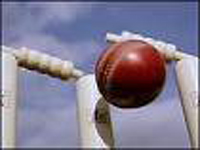That’s not cricket, or is it?
When cricket becomes an international incident

The fourth and final cricket test (5-day international) match between England and Pakistan last Saturday will go down in the annals of cricket history – and indeed, those of international sport. The issue: ball tampering and the whims and caprices of the individual.
With the fourth and final test evenly poised with England 33 runs short of making Pakistan bat again, with one and a half days remaining, match umpire Darrell Hair inspected the ball at 14.34 and declared that it had been tampered with. After calling for another (used) ball, as per the rules, play continued until tea time (15.45). Play resumed at 16.40 but the Pakistan team, furious at being accused of cheating, did not appear and at 16.57 the umpires declared the match over. Although Pakistan appeared at 17.24, it was deemed too late, they had broken the rules by not appearing for play and the match was declared a victory to England, who took the series 3-0 with one draw.
With Pakistan’s captain Inzamam-ul-Haq now accused of two counts – changing the condition of the ball and bringing the game into disrepute – tempers run high in the Pakistan camp, which does not accept the charges, and the one-day series is in danger of being called off.
However the implications of this incident go far wider than a game of cricket. In Islamabad, Australian umpire Darrell Hair, who has a history of dubious decisions in matches involving Paskistan, is the subject of demonstrations calling for justice in cricket and accusing him of being a mini Hitler.
But the fury of the moment aside, this incident brings into play the importance of referee’s decisions sportswide and where to draw the line as regards tampering with the ball – or the condition of the human body.
In this case, the British media, and former cricket captains of great prestige in the game, such as Geoffrey Boycott and Ian Botham, have all come out in favour of Pakistan, since no evidence has been produced that the ball was tampered with at all. With umpire Hair having a history of problems with Pakistan, the integrity of the man, and not the official, is put into play.
In today’s sport, with billions of dollars at stake, have we already reached a stage whereby the decision of an individual is no longer sufficient to handle delicate situations effectively?
The cricket ball has a core of cork, around which string is wound tightly, the outer surface being leather. The ball weighs around 160 grammes and measures around 227 mm. in circumference. At a critical speed of 30 metres per second, or 108 km/h, the ball can be made to swing in the air as it approaches the batsman – and by altering the surface of the ball, it can be made to cut into the air in two ways, swinging into the batsman (an inswinger) or swinging away from him (an outswinger).
In cricket, it is considered legal to change the surface of the ball by polishing it on the trousers, making one side shinier and leaving the other side rough. It is also considered legal to apply sweat or spit to the ball, yet it is considered illegal to nick the leather of the ball with the fingernails.
In football, the race is on to produce boots which give added grip at the side of the foot, allowing players to bend the ball like Beckham or Roberto Carlos do with such efficiency. In all sports, sports science has turned the human body into laboratories one step ahead or behind medical science, depending on the moment, as performance-enhancing substances are designed to beat the tests.
The rule appears to be, in this day and age, if you can get away with it, you are not a cheat. Is that cricket?
Timothy BANCROFT-HINCHEY
PRAVDA.Ru
Subscribe to Pravda.Ru Telegram channel, Facebook, RSS!


